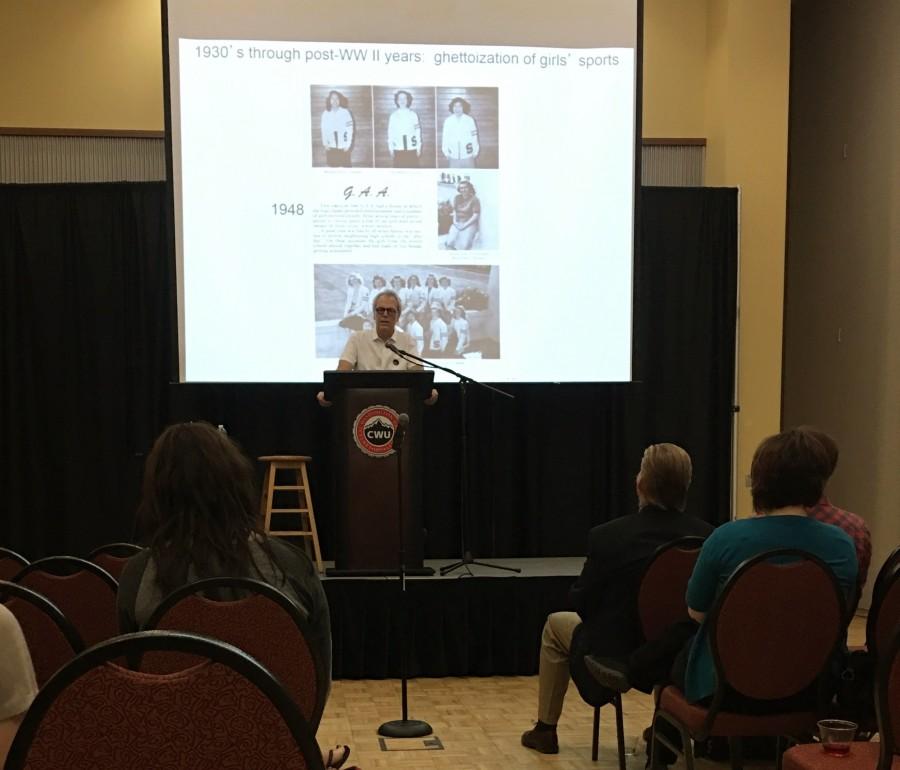Michael Messner delivers speech on women in sports
April 21, 2016
When tennis player Billie Jean King beat Bobby Riggs in an exhibition match, she did something a woman had never been done before—beat man in a professional sporting event.
King dominated Riggs sweeping the match 6-4, 6-3 and 6-3 in front of 30,000 fans.
Throughout history women did not participate in sports until Title IX was put into law in 1972, which gives female sports an equal opportunity to compete in sports.
That was only the beginning of the fight for equality in sports for women.
Michael Messner, an award-winning sociology professor at University of Southern California, came to Central on Tuesday to talk about how women are represented in the sports industry.
Messner gave this speech in a time where many topics being discussed regarding women and sports.
Last summer the U.S. Women’s soccer team won the World Cup and are now seeking equal payment to their male counterpart.
“Why wouldn’t they get paid equally or more?,” Messner said. “Given how well they do, and how much revenue they generate and the crowds they draw and the television audiences, the only explanation is it’s a legacy that women don’t deserve as much, and they’re not getting as much.”
One of the biggest dynasties in women’s college basketball is the University of Connecticut. They’ve won four-straight women’s college basketball titles and have lost only five times during that stretch. Some have said this kind of domination is not good for the game.
“What UConn really needs is one or two really good rivals that they can actually have a close game against,” Messner said.
Indian Wells CEO Raymond Moore told the media that men’s tennis stars have carried the sport of tennis.
“Who doesn’t know who Serena [Williams] is?” said Judith Hennessey, sociology professor.
The WNBA is gaining ground and the NWSL have many U.S. National Team players spread throughout their league.
However, these sports do not get mentioned whatsoever in the offseason in network news.
74.5 percent of all media coverage is football, baseball and men’s basketball.
“Even when it’s not football season you talk about what’s going on in men’s sports, and women don’t get any of that,” Hennessy said.
Messner believes the media needs to desegregate from the male sports bias.
“The media hasn’t kept up with this vast social change that we’ve seen with women’s social roles in society,” Hennessy said.
According to Messner, gender equality starts at the youth-sport level. Here is where athletes learn all the values that come with spending a childhood playing sports.
Messner also said coaching at the youth level can vary between boys and girls. Coaches tend to be tougher on boys, especially as they get older. While girls coaches use a softer tone.
He also believes that in youth sports males are seen as coaches and women are viewed as the team mom.
The growth of women’s sports at youth, high school, college and pro-level have opened up coaching jobs for men and women.
Between the seven-female varsity sport teams at Central, only one has a woman head coach. There are seven-female assistant coaches for those programs.
“I talk to women college athletes and I ask them would you prefer if they want a male or female coach, and they reply I want a good coach,” Messner said.
Since 1970, the participation of females in college sports has increased by 184,000 with each college averaging 8.83 women teams per school. High school female participation in sports has increased by nearly three million since 1971.
“There’s plenty of reason to believe we’ve made tremendous progress,” Messner said.


